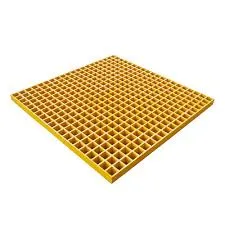
-
 Afrikaans
Afrikaans -
 Albanian
Albanian -
 Amharic
Amharic -
 Arabic
Arabic -
 Armenian
Armenian -
 Azerbaijani
Azerbaijani -
 Basque
Basque -
 Belarusian
Belarusian -
 Bengali
Bengali -
 Bosnian
Bosnian -
 Bulgarian
Bulgarian -
 Catalan
Catalan -
 Cebuano
Cebuano -
 China
China -
 China (Taiwan)
China (Taiwan) -
 Corsican
Corsican -
 Croatian
Croatian -
 Czech
Czech -
 Danish
Danish -
 Dutch
Dutch -
 English
English -
 Esperanto
Esperanto -
 Estonian
Estonian -
 Finnish
Finnish -
 French
French -
 Frisian
Frisian -
 Galician
Galician -
 Georgian
Georgian -
 German
German -
 Greek
Greek -
 Gujarati
Gujarati -
 Haitian Creole
Haitian Creole -
 hausa
hausa -
 hawaiian
hawaiian -
 Hebrew
Hebrew -
 Hindi
Hindi -
 Miao
Miao -
 Hungarian
Hungarian -
 Icelandic
Icelandic -
 igbo
igbo -
 Indonesian
Indonesian -
 irish
irish -
 Italian
Italian -
 Japanese
Japanese -
 Javanese
Javanese -
 Kannada
Kannada -
 kazakh
kazakh -
 Khmer
Khmer -
 Rwandese
Rwandese -
 Korean
Korean -
 Kurdish
Kurdish -
 Kyrgyz
Kyrgyz -
 Lao
Lao -
 Latin
Latin -
 Latvian
Latvian -
 Lithuanian
Lithuanian -
 Luxembourgish
Luxembourgish -
 Macedonian
Macedonian -
 Malgashi
Malgashi -
 Malay
Malay -
 Malayalam
Malayalam -
 Maltese
Maltese -
 Maori
Maori -
 Marathi
Marathi -
 Mongolian
Mongolian -
 Myanmar
Myanmar -
 Nepali
Nepali -
 Norwegian
Norwegian -
 Norwegian
Norwegian -
 Occitan
Occitan -
 Pashto
Pashto -
 Persian
Persian -
 Polish
Polish -
 Portuguese
Portuguese -
 Punjabi
Punjabi -
 Romanian
Romanian -
 Russian
Russian -
 Samoan
Samoan -
 Scottish Gaelic
Scottish Gaelic -
 Serbian
Serbian -
 Sesotho
Sesotho -
 Shona
Shona -
 Sindhi
Sindhi -
 Sinhala
Sinhala -
 Slovak
Slovak -
 Slovenian
Slovenian -
 Somali
Somali -
 Spanish
Spanish -
 Sundanese
Sundanese -
 Swahili
Swahili -
 Swedish
Swedish -
 Tagalog
Tagalog -
 Tajik
Tajik -
 Tamil
Tamil -
 Tatar
Tatar -
 Telugu
Telugu -
 Thai
Thai -
 Turkish
Turkish -
 Turkmen
Turkmen -
 Ukrainian
Ukrainian -
 Urdu
Urdu -
 Uighur
Uighur -
 Uzbek
Uzbek -
 Vietnamese
Vietnamese -
 Welsh
Welsh -
 Bantu
Bantu -
 Yiddish
Yiddish -
 Yoruba
Yoruba -
 Zulu
Zulu
frp panel
Exploring FRP Panels An Innovative Solution in Construction and Design
In recent years, the construction and design industries have been experiencing a significant transformation, largely driven by advancements in materials technology. One of the standout innovations in this realm is the advent of Fiber Reinforced Polymer (FRP) panels. These panels are making waves due to their exceptional properties, versatility, and eco-friendliness, positioning them as a preferred choice for various applications.
.
Moreover, FRP panels boast an impressive strength-to-weight ratio, allowing for easier handling during installation compared to heavier materials. This characteristic translates to reduced labor costs and time savings on construction sites. Additionally, the flexibility of design offered by FRP panels enables architects and designers to push the boundaries of creativity. With the ability to mold, shape, and color the panels according to specific needs, the aesthetic possibilities are virtually limitless.
frp panel

Another key benefit of FRP panels is their energy efficiency. Being lightweight, they require less energy to transport and install. Furthermore, they can contribute to better insulation in building projects, potentially reducing heating and cooling costs over time. As sustainable building practices become increasingly important, the use of materials like FRP, which enhances energy efficiency, is gaining traction.
In terms of applications, the versatility of FRP panels is astounding. They are used in a variety of settings, from residential homes to commercial buildings and industrial facilities. In interiors, FRP panels can be employed as decorative wall coverings, providing unique aesthetics while ensuring durability. Externally, they can serve as cladding materials, protecting structures from the elements while enhancing their visual appeal. Additionally, they find utility in areas such as transportation (for manufacturing lighter vehicles) and infrastructure (for constructing bridges and walkways).
While the advantages of FRP panels are clear, it is essential to consider some challenges associated with their use. The initial cost of FRP materials can be higher than traditional options, which may deter some builders. However, when factoring in their long-term durability, reduced maintenance costs, and overall lifecycle benefits, FRP panels can be a cost-effective solution in the long run.
In conclusion, Fiber Reinforced Polymer panels represent a significant technological advancement in construction and design. Their unique combination of strength, lightweight nature, corrosion resistance, and aesthetic versatility makes them a desirable material for modern applications. As the industry continues to embrace innovation and sustainability, FRP panels are likely to play an increasingly important role in shaping the future of construction. By adopting these panels, constructors not only enhance their projects' performance but also contribute positively to environmental preservation. The future of building is indeed bright with the integration of FRP technology.
Latest news
-
Exploring the Benefits of Top Hammer Drifter Rods for Enhanced Drilling PerformanceNewsJun.10,2025
-
High-Precision Fiberglass Winding Machine for GRP/FRP Pipe Production – Reliable & Efficient SolutionsNewsJun.10,2025
-
FRP Pipes & Fittings for Shipbuilding - Corrosion-Resistant & LightweightNewsJun.09,2025
-
Premium FRP Flooring Solutions Durable & Slip-ResistantNewsJun.09,2025
-
Premium Fiberglass Rectangular Tanks Durable & Lightweight SolutionNewsJun.09,2025
-
Tapered Drill String Design Guide Durable Performance & UsesNewsJun.09,2025









